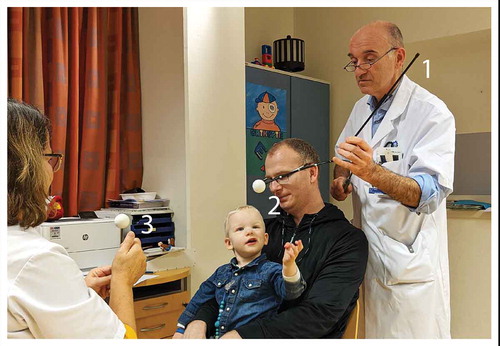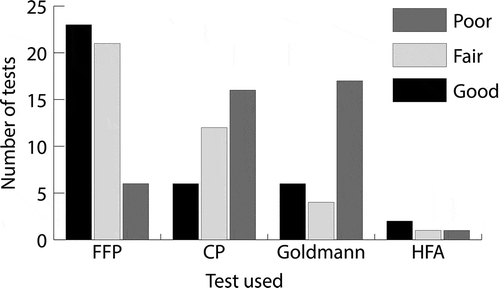Figures & data
Figure 1. The behavioural visual field screening test. Equipment includes a rod with a level attached to it used for positioning (1), a graded semicircular black metal arc with a white stimulus at the end (2), and a white fixation target on a rod (3)

Table 1. Baseline table showing the different pathologies present in the neurologically impaired children
Table 2. Number of Standard Conventional Perimetry (SCP) tests used for the cohort of neurologically impaired children. Examiner-based assessment of reliability (EBAR) scores (i.e. Good, Fair or Poor) per SCP type is shown. Gender percentages calculated horizontally of total in subgroup. Percentages of total calculated vertically
Figure 2. Results of the EBAR scoring system per SCP test: full field Peritest (FFP); central Peritest (CP); Goldmann perimetry; and Humphrey Field Analyser (HFA)

Figure 3. Comparison between the first and second SCP tests for the central Peritest (CP), the full field Peritest (FFP) and the Goldmann perimetry for all eyes of children that underwent a second SCP test

Table 3. Comparison of visual field defects detected by the behavioural visual field (BEFIE) test and standard conventional perimetry (SCP) per eye (with some missing datasets). Results scored per eye. Note that percentages do not always exactly add up to 100% due to rounding of numbers
Data availability statement
The data that support the findings of this study are available upon request from the corresponding author. The data are not publicly available due to their containing information that could compromise the privacy of research participants.
